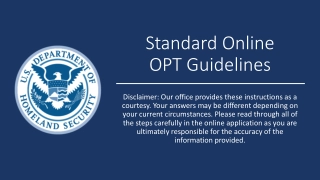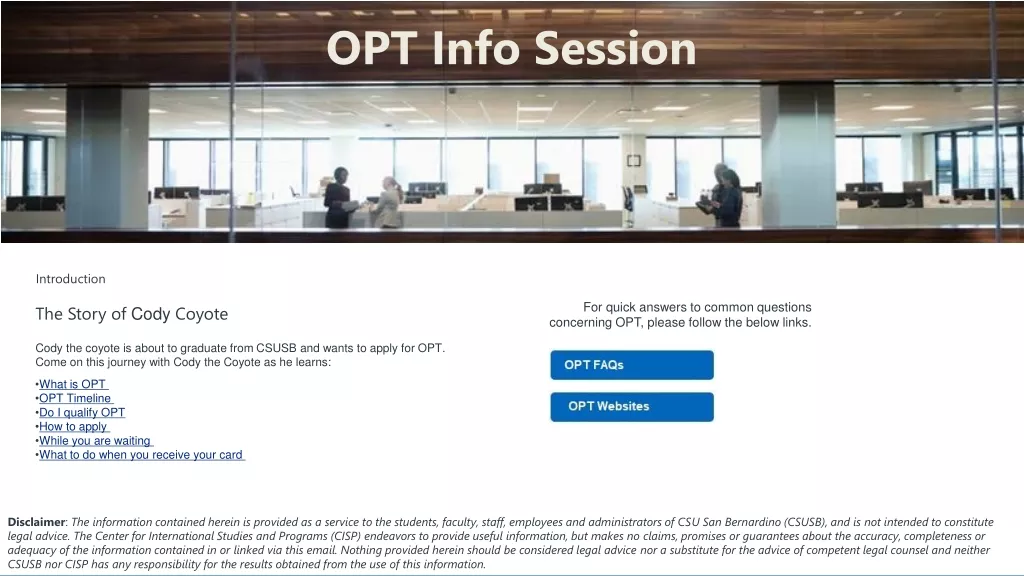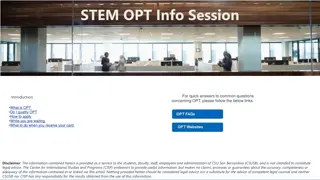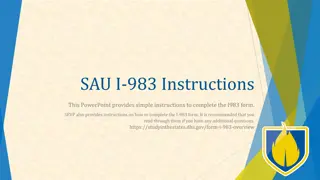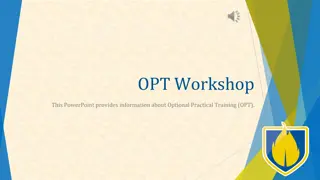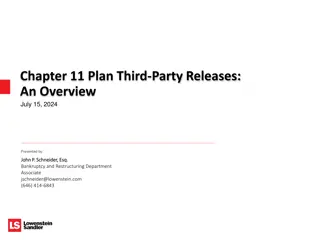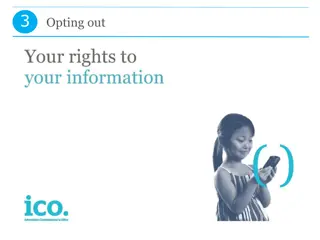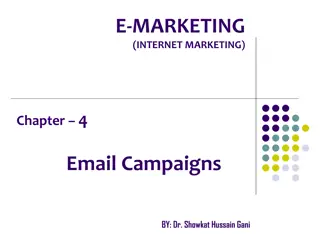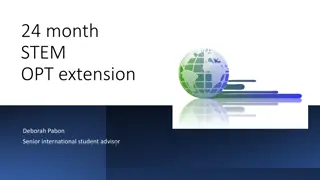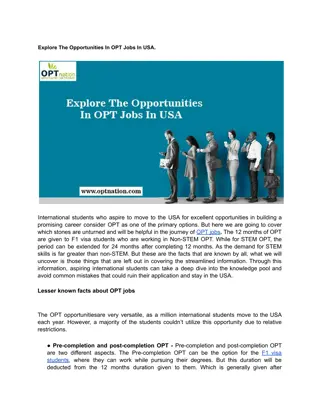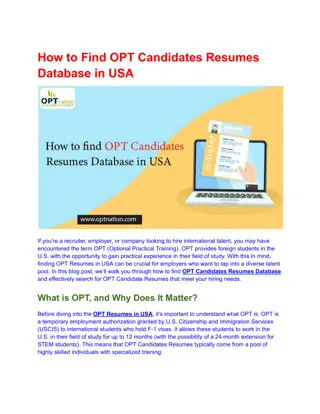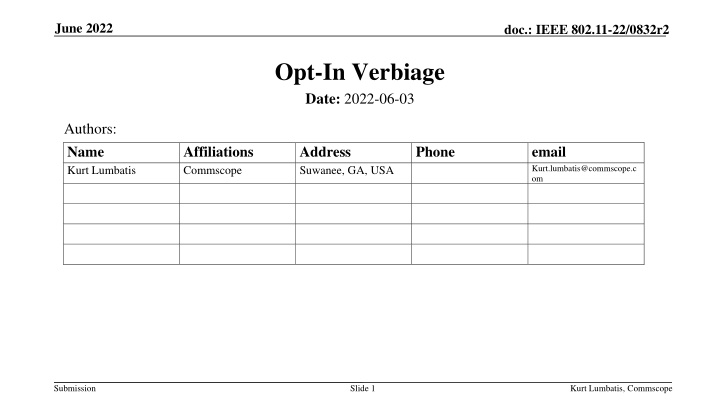
Exploring User Opt-In and Opt-Out in Privacy Laws
Delve into the concepts of user opt-in and opt-out as dictated by privacy laws like GDPR and CCPA. Understand the implications, methods, and considerations surrounding user consent in data collection and processing activities.
Download Presentation

Please find below an Image/Link to download the presentation.
The content on the website is provided AS IS for your information and personal use only. It may not be sold, licensed, or shared on other websites without obtaining consent from the author. If you encounter any issues during the download, it is possible that the publisher has removed the file from their server.
You are allowed to download the files provided on this website for personal or commercial use, subject to the condition that they are used lawfully. All files are the property of their respective owners.
The content on the website is provided AS IS for your information and personal use only. It may not be sold, licensed, or shared on other websites without obtaining consent from the author.
E N D
Presentation Transcript
June 2022 doc.: IEEE 802.11-22/0832r2 Opt-In Verbiage Date: 2022-06-03 Authors: Name Kurt Lumbatis Affiliations Commscope Address Suwanee, GA, USA Phone email Kurt.lumbatis@commscope.c om Submission Slide 1 Kurt Lumbatis, Commscope
January 2022 doc.: IEEE 802.11-22/0832r2 Revisions R0 Initial Version R1 Slight Text Changes. R2 Fix errors, and typos. Modification to Straw Polls. Submission Slide 2 Kurt Lumbatis, CommScope
June 2022 doc.: IEEE 802.11-22/0832r2 Abstract A presentation and discussion on User Opt-In and possible replacement text for this term. Also requests MIB definitions for tracking the User Opt-In selection. Submission Slide 3 Kurt Lumbatis, Commscope
June 2022 doc.: IEEE 802.11-22/0832r2 Definition of Opt-in / Opt-out Privacy laws like the General Data Protection Regulation (GDPR) and the California Consumer Privacy Act (CCPA) revolve around requirements mandating that businesses get users to opt in or opt out of certain data collection and processing activities. Opting In means that a user will take an affirmative action to provide consent. The most common way to implement opt-in methods is through checkboxes. When presented with a checkbox, the user must take action to check the box, which denotes their consent. Opting Out means a user takes no action to provide consent or removes previously given consent. The most common methods are: NOT check a box (default action) denoting no consent is given UNCHECK a box -- to remove previously given consent for the option. Submission Slide 4 Kurt Lumbatis, Commscope
June 2022 doc.: IEEE 802.11-22/0832r2 Additional Points Due to privacy concerns and device tracking, 802.11bh must take into account whether the user will make a decision either affirmative or negative (default) to allow their device to be identified within and possibly tracked within a network. This compelled the use of Opt-In in many of the use cases and in the text this group has been considering. In the current 802.11-2020 standard, I have found no explicit text which speaks to this topic. Searches included Optionally Accepted Optionally Allowed User --- The closest I found was User Agreed Values in the IEEE Dictionary. However, this does not have the same connotation. Submission Slide 5 Kurt Lumbatis, Commscope
June 2022 doc.: IEEE 802.11-22/0832r2 Additional Points 802.11be D2.0 contains the following text in 4.5.13 An AP MLD or a non-AP MLD invokes EPCS priority access on-demand when instructed to do so by a higher layer function, such as an authorized user or a managed service provider that detects the need for priority. The process for detecting the need for EPCS priority access by the higher layer function is outside the scope of this standard. IEEE 802.11 has taken the stance that user interactions and higher layer functions are not addressed in the standard but does allow for them. Submission Slide 6 Kurt Lumbatis, Commscope
June 2022 doc.: IEEE 802.11-22/0832r2 Suggestions In our working documents the following suggestions are proposed: 1. Define User Opt-In / Opt-Out Opt-In User chooses to participate in. Opt-Out User has not chosen to participate in. Note: Opt-Out should be the default. 2. Define or utilize different verbiage User Agrees / Has not Agreed User Allows / Has not Allowed Others?? Submission Slide 7 Kurt Lumbatis, Commscope
June 2022 doc.: IEEE 802.11-22/0832r2 Additional Actions A set of MIB(s) need to be defined to track the positive or negative (default) User Selection Submission Slide 8 Kurt Lumbatis, Commscope
June 2022 doc.: IEEE 802.11-22/0832r2 Straw Poll 1 SP-1 TG802.11bh should define and utilize the terms User Opt-In / Opt-Out as part of this working group and in its proposed text. Y/N/A Submission Slide 9 Kurt Lumbatis, Commscope
June 2022 doc.: IEEE 802.11-22/0832r2 Straw Poll 2 SP-2 TG802.11bh should define text other than User Opt-In / Opt-Out as part of this working group and its proposed text. Y/N/A Submission Slide 10 Kurt Lumbatis, Commscope
June 2022 doc.: IEEE 802.11-22/0832r2 Straw Poll 3 SP-3 TG802.11bh shall define MIB(s) which shall be utilized to capture higher layer decisions and utilize the MIB(s) as a control mechanisms for device Unique Identifier support and mechanisms. Y/N/A Submission Slide 11 Kurt Lumbatis, Commscope
June 2022 doc.: IEEE 802.11-22/0832r2 References IEEE Std 802.11-2020 IEEE P802.11be/D2.0 Submission Slide 12 Kurt Lumbatis, Commscope

